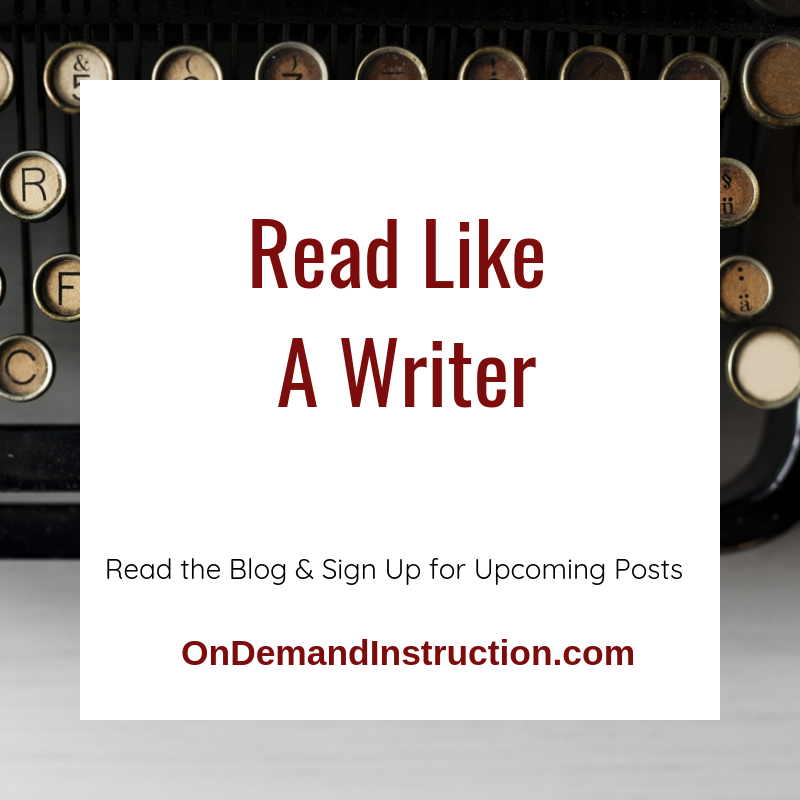
When I teach memoir workshops, one of the topics we discuss is the difference between fiction and nonfiction writing. When writing memoir, writers tend to approach the writing with a stiff spine and a list of facts to impart upon the reader, and that can lead to lifeless, though factual, writing. Unfortunately, one of our first inclinations as memoir writers is to turn off the reader with dull, encyclopedic accounts of events.
Think of the classic school biography project. These tend to start with the facts: date of birth, place of birth, and parent’s names. Invariably, the writer has lost the reader by the end of the first paragraph because the writing functions better as a sleep tonic than an engaging piece of writing.
For whatever reason, many writers fall into this pattern when writing nonfiction, especially memoir. We tend to think of life as a series of facts rather than a series of stories with full sensory details and deep emotions and thoughts. All too often, the result is writing that fails to inspire the reader.
How do we fix this situation? Memoirists can use fiction writing techniques to capture and keep their reader’s attention. We can use our creative storytelling skills when we write nonfiction to bring our personal stories to life. Though the stories are factual, they don't need to be boring.
In Eat Like a Fish, author Bren Smith documents not just his life stories as a Newfoundland fisherman turned sea farmer, but he also lays out his philosophy around providing highly nutritious food amid climate change and restoring the ocean’s plant and animal diversity.
I picked up the book because I wanted to learn about his ideas on sea farming, but I was pleasantly surprised by Smith's crisp, lively writing style which engaged me from the book’s beginning. Smith had me hooked from the first page to the last as he took me along his life journey from Canada to New England to Alaska and beyond. What tools did he use to pull me into his memoir?
Subscribe to the blog and get tips and tricks to support your writing.
Success! Now check your email to confirm your subscription.
Let’s take a peek into the book Eat like a Fish and see how he does it. Read the two quotes below. Notice how Smith pulls the reader into the situation with just a few words, and through just one paragraph, leaves us with a vivid sense of the story:
The ER nurses wouldn’t let me be. The first day I pushed my cart into their domain, they swarmed, demanding to know my story. They were all ages and sizes, but all shared a mix of warmth, strength, and irreverence. They made fun of my teenage silence and anger, forcing me to unfurl. I’d join them at the nurse’s station, listening to gossip about new patients, shitty boyfriends and husbands, grim tales of bad sex, frustration with sloppy and arrogant doctors. They were great storytellers, able to slide from ridicule to compassion mid-sentence. During that time in my life, they were my ballast. No wonder I later married a nurse. (Page 28)
I had been welcomed by the new urban class of “foodies,” a strange, ritualized culture marked by the trancelike state they’d go into after the first bite of a new dish. A slight smile curled onto their faces as the oyster liquor hit their taste buds. Their eyes would close. A moment of silence. Then a practiced attempt at poetry, as they detailed the swirls of flavor. Never one to fetishize food—I still ate at the gas station most nights—I found this new and, at first, alienating. But, God, how they loved my oysters, my pea crabs, my slipper shells. I’d quickly become proud of the food I grew, and adopted their culinary dialect. (Page 107) We didn’t need a laundry list of facts and figures to get a sense of what was happening or how Smith felt in this time of life. He is able to tell a story in just a paragraph. I love this book, and I loved reading it. It filled me with fog and mist and green leaves and salty sea and cold sand. As I was reading it, I had a clear sense of where he was in life, the ideas he was wrestling with, and the life questions he had. That type of storytelling gives the reader a glimpse into one’s life, and that’s one of the most powerful effects that we can have. When we pull the reader into our little corners of the universe and give them a peek behind the curtains, we create a level of intimacy and clarity that readers seek. A memoir reader wants to know about you, wants to know your stories, and wants that revelation of self. When you tell a story for the sake of the story, you can give them what they want without boring them. Related Blog Posts
Comments are closed.
|
About the SiteWelcome, Writers! Archives
September 2023
|






 RSS Feed
RSS Feed